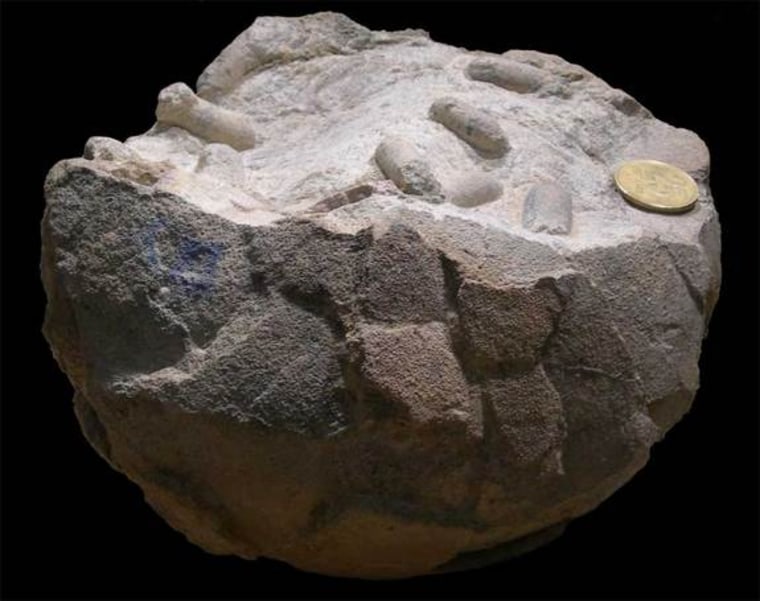Pesky wasps once fed upon the insects gorging on rotting dinosaur eggs some 70 million years ago, suggests a new finding of ancient wasp cocoons hidden inside the fossilized egg of a titanosaur sauropod.
The research, published July 15 in the journal Palaeontology, suggests the ancient wasps played an important role in certain food webs during the Age of Dinosaurs.
The clutch of five eggs, each with a diameter of about 7.9 inches and belonging to a titanosaur (among the largest creatures to ever walk the Earth ), was discovered in 1989 in the Patagonia region of Argentina; only recently did scientists discover that one of the broken eggs contained tiny sausage-shaped structures. The size and shape of the structures, which are about an inch long and 0.3 inches wide, most closely matched cocoons made by some species of modern wasp and may have belonged to the Cretaceous wasp Rebuffoichnus sciuttoi.
While scientists have found fossilized dinosaur eggs, including an ancient sand nest with eggs that likely belonged to a meat-eating dinosaur, as well as ancient insect cocoons, "this is the first time that these cocoons are found closely associated with an egg," study researcher Jorge Genise of the Museo Argentino de Ciencias Naturales said in a statement.
By looking at the numbers and types of insects preserved inside the dinosaur egg, the researchers estimate the dinosaur egg was broken by force, with subsequent fractures in the eggshell allowing scavenging creatures to feed upon the yolk contents. Later, other creatures, such as spiders, arrived at the now-rotting egg, feeding on the initial scavengers. The researchers say the wasps fed on either the initial scavengers or the spiders gorging on those scavengers.
Whichever the case, the wasps later formed the now-preserved cocoons. No wasp larvae were found, however, in the cocoons.
"Some cocoons have a truncated end that indicate the emergence of adult wasps," study researcher Laura Sarzetti, of the Museo Argentino de Ciencias Naturales, told LiveScience.
"The presence of wasps, which are at the top of carrion food web(s), suggests that a complex community of invertebrates would have developed around rotting dinosaur eggs," the researchers write in the journal article.
The wasps and scavengers would have served as nest cleaners, helping to clear out material that possibly contained pathogens from the nest. Some dinosaurs revisited nest sites year after year to lay new clutches of eggs, and so removing the decaying material would have been important.
Follow LiveScience for the latest in science news and discoveries on Twitter and on .
